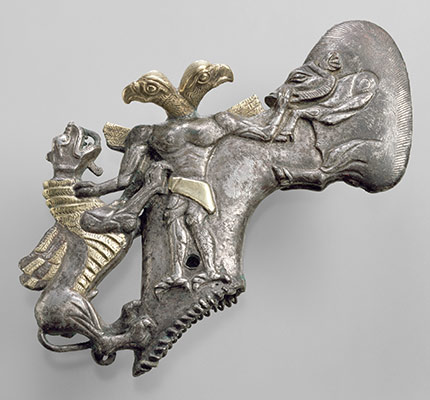The landscape and climate of Central and North Asia is divided into zones that extend east-west across the broad expanse of Eurasia. In the far north is an arctic zone with tundra vegetation, which can support only small numbers of people with hunting and reindeer-herding economies. Next, a forest zone called the taiga has coniferous trees of varying kinds over its extent; the landscape supports hunting, fishing, and the gathering of plants. In most places, the taiga is separated from the next zone—the steppes—by a mixed forest that includes deciduous trees (sometimes called the forest-steppes). The steppes zone is a relatively flat grassland occasionally broken by hills, rivers, lakes, and seas. The southernmost part of Central Asia, both east and west, is desert, edged by mountain ranges. It is in the steppes, the oases of the desert, and the foothills of the mountains that cultures change most rapidly from 8000 to 2000 B.C.
Although in southern Central Asia the relative chronological positions of various cultures are generally clear, the absolute chronological dates remain a matter of scholarly debate. For consistency across timelines, “calibrated” carbon-14 dates are used here, resulting in dates up to 500 years earlier than traditional dates for these periods.
In this timeline, “neolithic” indicates cultures whose food sources are based on hunting, gathering, and fishing, and stone tools and weapons more sophisticated than in the previous “mesolithic”; “eneolithic” denotes cultures with some food production from domesticated plants and/or animals; and “bronze age” means cultures with economies producing their food with developed technologies such as irrigation agriculture or systematic stockbreeding of domesticated animals.


